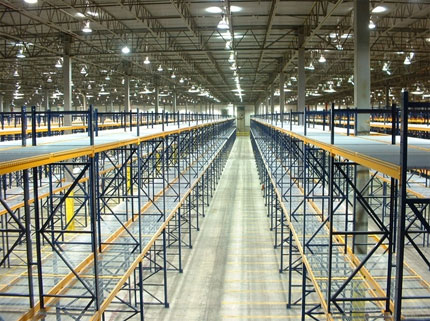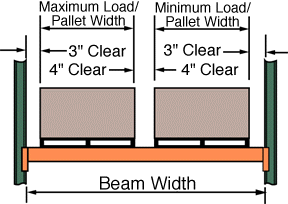5 Common Pallet Rack Mistakes
Avoiding common errors will help improve safety, save space and enhance rack functionality

When it comes to warehouse storage, pallet racks provide an optimal, easy-to-maintain solution. They’re the most common way of storing pallet loads in the world, and they’re used in the vast majority of warehouses, manufacturing facilities, commercial operations and even retail stores. Whether you’re dealing with selective, pushback, drive-in or other types of racks, the issues are frequently similar.
Safe pallet rack operation involves understanding how to properly use racks; an otherwise safe rack can become dangerous and expensive if used incorrectly. Here are 5 common mistakes people make with pallet racks—and what you can do to ensure you don’t make any of them in your warehouse.
1) Don’t Climb the Pallet Rack
We all get busy from time to time (especially in a warehouse environment where there is a great deal of commotion). To save time, people sometimes climb pallet racks to pick orders or do other things. While it may be tempting for a busy picker to climb up and get that one needed box when the floor level pallet is spent, this is extremely dangerous. Racks aren’t designed for climbing; they can have broken planks, protruding nails, and fractured stringers that can give way under a person’s weight or puncture a hand looking for a hold.

2) Don’t Overload
Knowing your pallet rack’s capacity before you load is critical toward ensuring worker safety. If, for instance, your pallet wasn’t designed for a heavy load, a collapse could be inevitable. Be certain that your rack can hold your load, particularly in the upper levels (if you don’t see weight capacities posted on your rack, check the manufacturer specs). Even better, store the heaviest loads either in lower bays or on the floor. Slot your storage so that if you have mixed loads, the lightest pallets are in high bays, and the heavier ones lower.
3) Avoid damaging your pallet racks
Pallet racks can be subject to all sorts of abuse in the warehouse: overloading/misloading, collisions with heavy forklifts, etc. For this reason, even the toughest rack needs some cautious handling, processes, guarding equipment and other help to remain in service.
Preventing and reducing pallet rack damage involves training forklift drivers on proper driving and loading procedures, restricting forklift speeds, keeping the warehouse free of clutter, widening the aisles, conducting regular rack inspections, ensuring that your beam clips are engaged and more. Focus both on training and guarding products like steel guard rails, bollards and upright frame protectors. One collapsed rack bay can cost more than a simple training program or a full warehouse of frame protectors.
You should also take the environment of your rack into account. For instance, seismic zones have a different set of standards. Racks that are installed outdoors or otherwise exposed to wind can have their capacity ratings reduced. Racks installed on inadequate or non-level floors can also be compromised.
4) Don’t overlook height-to-depth ratio
When designing pallet racks, people tend to pay attention to the easy parts (beam capacity, the capacity of a pair of beams, etc.) to ensure a safe and reliable rack system. But there is another factor that many don’t understand and often overlook: height-to-depth ratio.
The Rack Manufacturers’ Institute (RMI) defines the height-to-depth ratio for a rack row as “the ratio of the distance from the floor to the top beam level divided by the depth of the frame” — this ratio cannot exceed 6-to-1. Because steps such as special anchors and base plates or overhead rack ties may be necessary, it’s important to consult professional rack engineers to ensure the rack is safe. Typically, if there is any question on this type of ratio, it’s best to consult your rack provider.

5) Avoid Incorrect or Unsafe Rack Loading
Pallet rack loads aren’t just simple weight versus structure. The dimensions, shape, and size/density of the load as it sits on storage racks is absolutely critical to safe, effective warehouse storage. To avoid incorrect or unsafe rack loading, it’s important to consider not only the weight, but also what type of load will be sitting on a wire deck, how it sits, and how that might affect the capacity.
Final Thoughts
Pallet rack safety involves understanding load capacities, knowing how to properly use racks, preventing damage to components and much more. To keep a safe rack from becoming dangerous and expensive, make sure to avoid some of the common mistakes people make with pallet racks, as outlined above.
For more information, refer to our pallet rack safety infographic or our pallet rack tips & info area.
Tags: Warehouse Management, pallet racks
Scott Stone is Cisco-Eagle's Vice President of Marketing with 35 years of experience in material handling, warehousing and industrial operations. His work is published in multiple industry journals an websites on a variety of warehousing topics. He writes about automation, warehousing, safety, manufacturing and other areas of concern for industrial operations and those who operate them.



